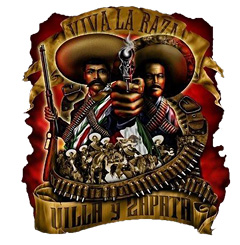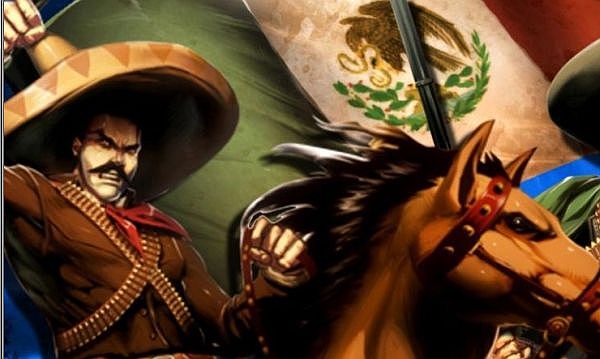Puerto Vallarta, Mexico - November 20, 2017 marks the 107th anniversary of the beginning of the Mexican Revolution, a period of change for the people of Mexico - and a time to remember and enjoy the freedom that was brought about by Mexico's revolutionaries.
The Mexican Revolution began November 20th, 1910, as an uprising against longtime dictator Porfirio Diaz, who resigned and left the country in 1911. But the abdication of Porfirio Diaz did not usher in an era of peace and prosperity. Far from it. In fact, the armed struggle lasted for the better part of a decade until around 1920.
Several groups, led by revolutionaries including Francisco Madero, Pascual Orozco, Pancho Villa and Emiliano Zapata, participated in the conflict.
Francisco I. Madero, who started the Revolution and became president, was overthrown by Victoriano Huerta, who in turn was overthrown by a coalition which then broke up into warring factions.
 |
Pancho Villa was defeated in 1915 at Celaya, the biggest battle of the Revolution, by Alvaro Obregon. (Obregon won, but Villa is much more famous today.)
After the Carranza/Obregon faction triumphed over the Villa/Zapata alliance, a new constitution was drafted under Venustiano Carranza's leadership in 1917. It's still in use, though with many amendments.
Throughout Mexico, there are streets and monuments named for the various heroes of the Mexican Revolution, principally Madero, Zapata, Villa and Carranza, and Mexican schools teach its importance, as it was not only a significant example of simple people's ability to fight a structure internally for a true change, but is also an reminder that all people have the right to be free from oppression of any kind.
Thus, El Día de la Revolución is a time of celebration with music, (especially Mariachi, which became the symbol of the Revolution because it represented the national spirit of the indigenous Mexican blood,) parades, and cultural activities in cities throughout Mexico.
On Monday, as we celebrate the National Holiday here in Puerto Vallarta, banks, government offices and about half of the businesses in town will be closed as most people have the day off to watch traditional parade that winds through downtown in celebration of El Día de la Revolución. The celebrations continue throughout the day with shouts of "Viva la Revolución!" and "Viva Mexico!" heard, and stories told or sung about the revolutionary heroes who ended the struggle and helped to reform Mexico.
We wish all of our readers, wherever they may be, a happy Mexican Revolution Day!


